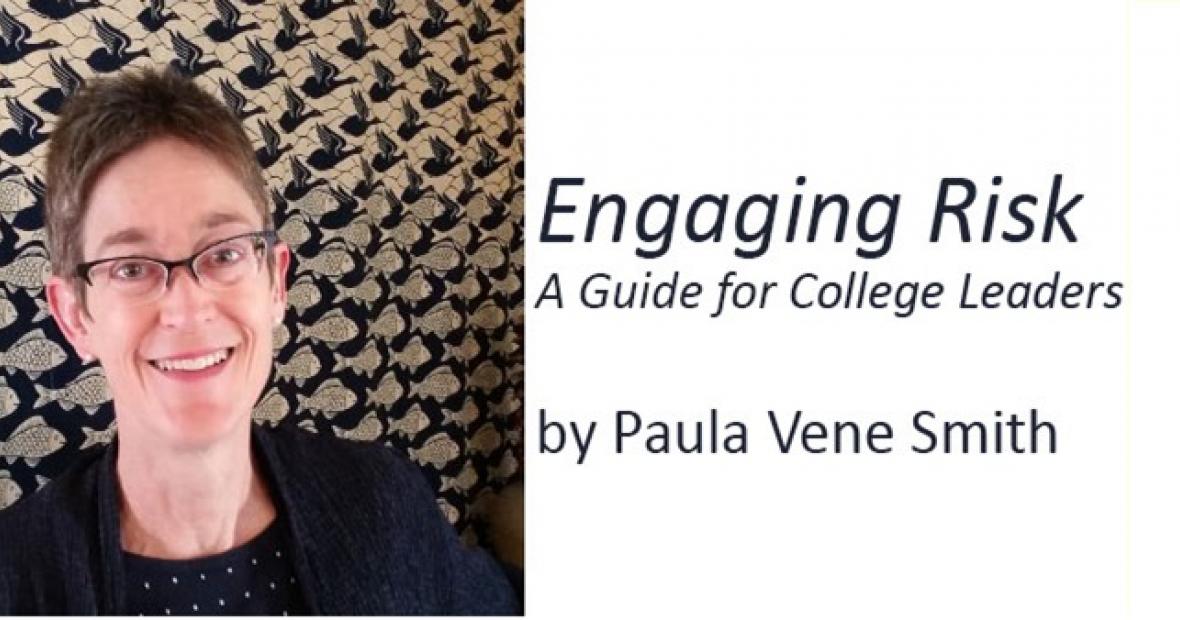An Interview with Paula Smith, author of “Engaging Risk: A Guide for College Leaders"
Is it risky for a teacher of creative writing, also a poet, novelist and short story writer, to write a book on, say, risk management? In search of an answer, we asked Grinnell faculty member Paula Smith a few questions about her recently-published book, “Engaging Risk: A Guide for College Leaders.”
- Why did you write this book?
As soon as I started reading about risk management, I realized that its principles can apply to running a college. But the challenge lies in applying a set of ideas originally developed in the corporate world to an entirely different type of organization. Academic institutions will succeed not by imitating business models, but by keeping a steady focus on the sustainability of their academic mission and by building on the strengths of shared governance. Therefore, college leaders need a modified version of risk management. “Engaging Risk” proposes that new approach: risk management geared toward the aims of a liberal arts college.
- How, in brief, would you have Grinnell College and higher education engage in risk?
A useful first step is the “campus tour” to identify, evaluate, and understand the challenges that the college faces. Some of these risks can affect daily operations, while others have potential impact on broader strategic goals. But the all-important second step is to take action. It’s not enough to analyze data, bring in consultants, produce colorful charts, or write reports. Making a real change, by putting something in place to control the risk (whether it’s a change in what people are doing, or a physical change to the campus itself) can actually lower the likelihood of a negative event, or maximize the benefits of a positive one. Only at that stage does the college achieve a goal of effective risk management.
- You’re a creative writer. How did your background as a writer impact the way you approached the topic of risk? Or the way you wrote the book?
Both fiction writers and risk managers continually ask the question, “What if….?” Writers drop their fictional characters into highly risky situations, and go on to explore how much the characters are willing to risk, what chances they’re willing to take. When we read fiction, we start anxiously anticipating what could go wrong for the characters, and wonder if they’ll be courageous enough to face what threatens them. Henry James called this sense “the imagination of disaster.” Risk managers take a similar approach. One of the favorite questions from a risk manager is, “What keeps you awake at night?” I think risk could even replace the traditional framework of “conflict” as a key concept for fiction writers. I enjoyed writing the book because I had fun bringing ideas to life with examples, clear explanations, and active verbs. It doesn’t pretend to be a literary work, and maybe for that reason I was able to write it fairly quickly.
4. Has the writing of this book changed the way you teach?
I’ve mentioned ideas from the book several times in class and when talking with students. Primarily, though, because the book contains such a strong message that teaching and learning are absolutely central to the life of a college (and that the biggest risks are those that threaten educational excellence), the experience of writing it has made me grateful to return to the classroom and work with students again.
Thursday, October 15 at 4:15pm, join Professor Paula Smith in Burling Lounge to help launch her new book, "Engaging Risk: A Guide for College Leaders," and learn why risk matters in decision-making at all levels. Between serving as dean of the college and her return to the faculty, Paula Smith played the role of "Professor Riskmeister" on Grinnell's campus and started a national dialogue about liberal arts colleges and risk (http://www.preparedcollege.com). Come to discuss the story behind her book and the deeper questions it raises about college governance.

